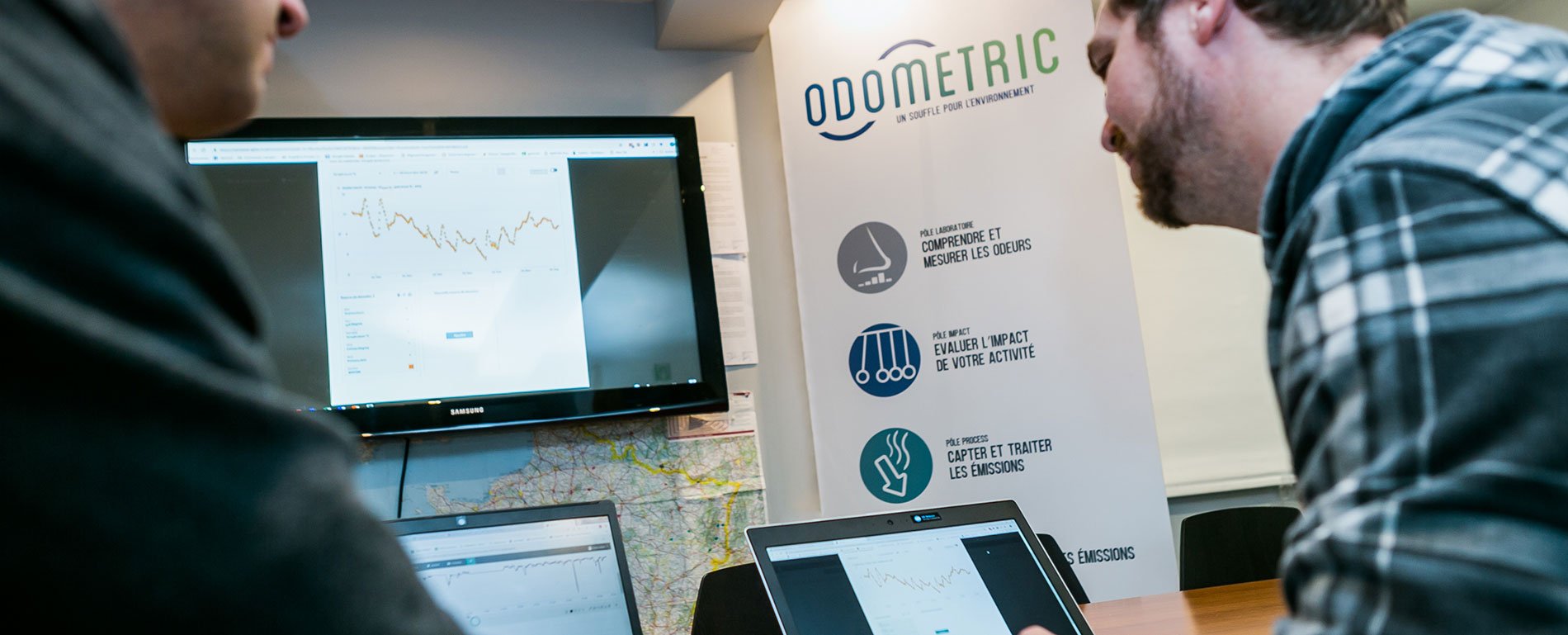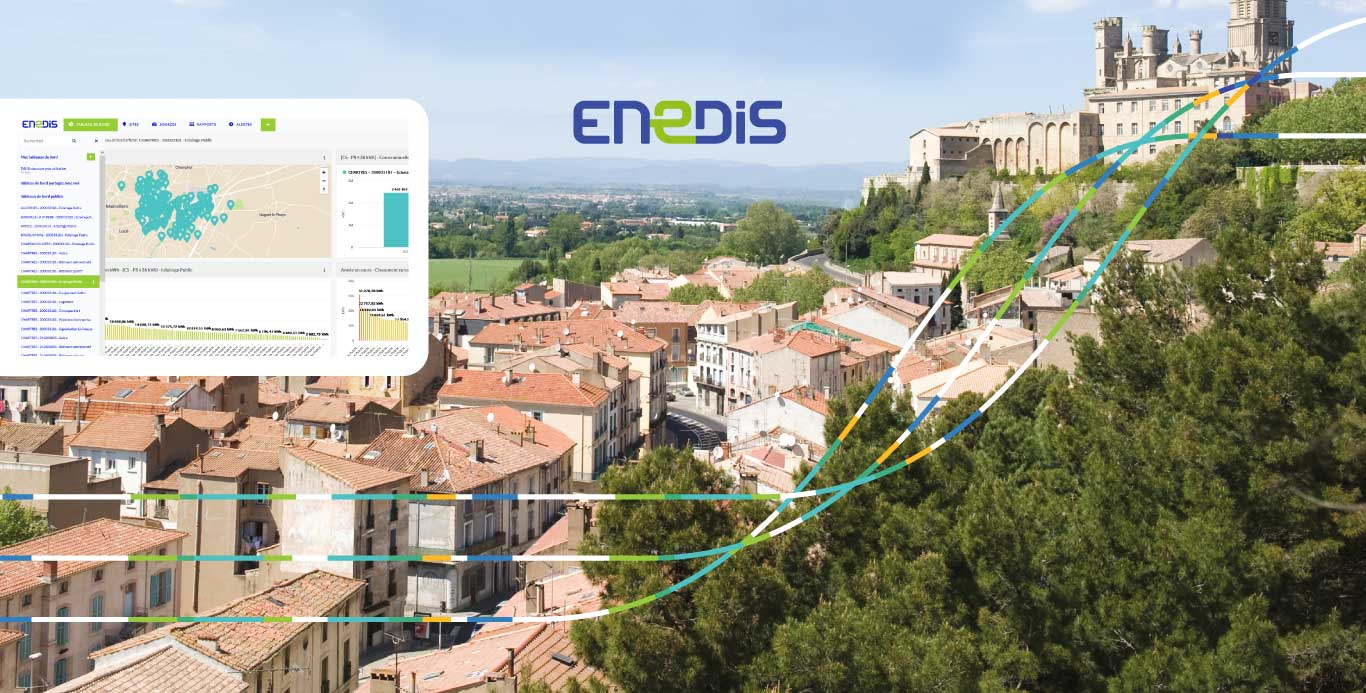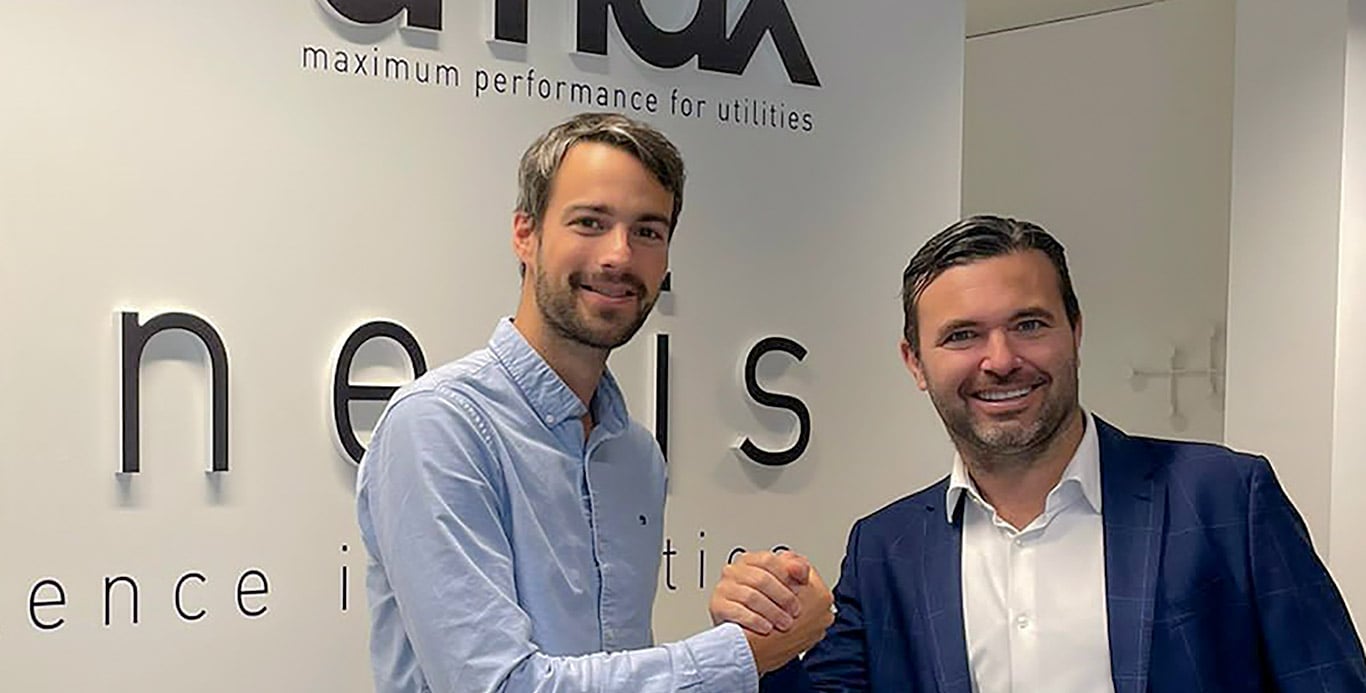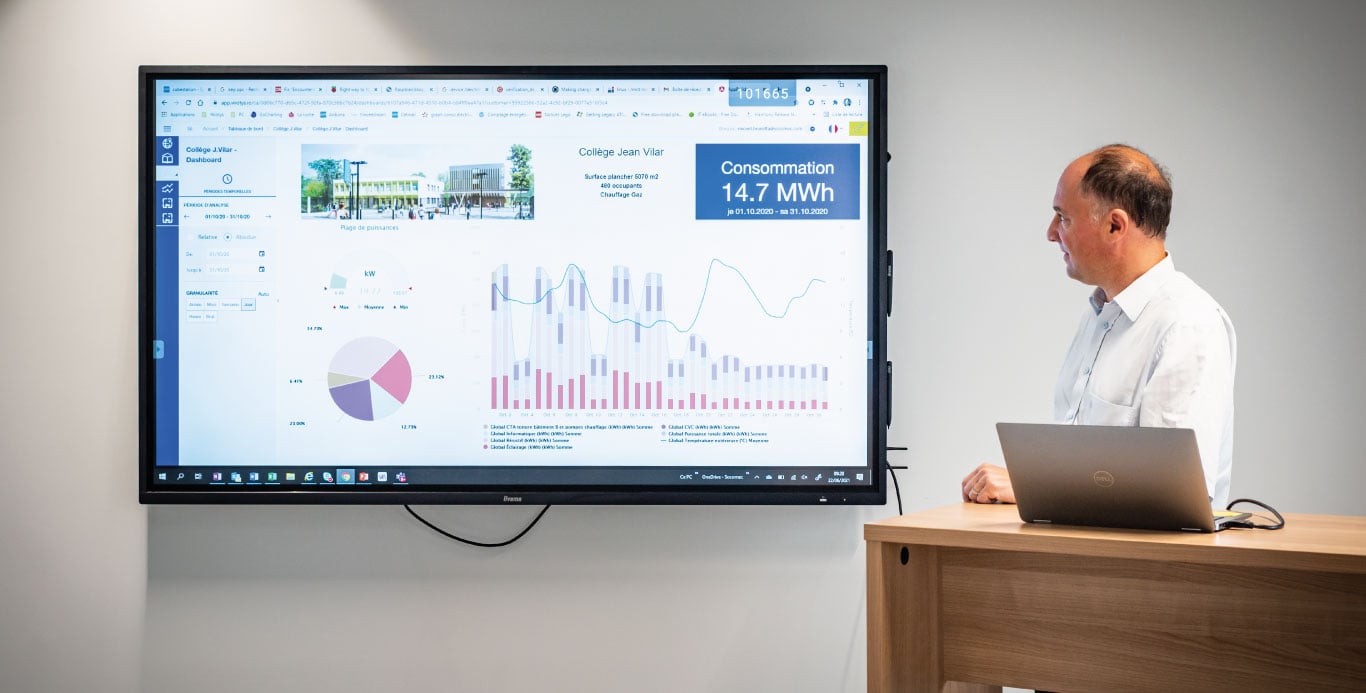Opinum Data Hub has become a key element in an entirely new area for Opinum – the analysis, interpretation and cross-referencing of olfactory data. Odometric's Manag’Air solution has taken a giant leap forward in the real-time monitoring of sites that are sources of environmental nuisances.
Odometric, an Arlon spin-off branch of the University of Liège, is a design office meets laboratory meets solutions designer that specialising in measuring and managing odours, especially for the purposes of checking atmospheric pollution and air quality.
The company provides odour sampling and quantification services (intensity, concentrations, degree of nuisance, etc.), environmental or neighbourhood impact assessments (with a view to granting an environment permit, for example), and advocates solutions for the handling and reduction of odour nuisances (through filtering or other techniques).
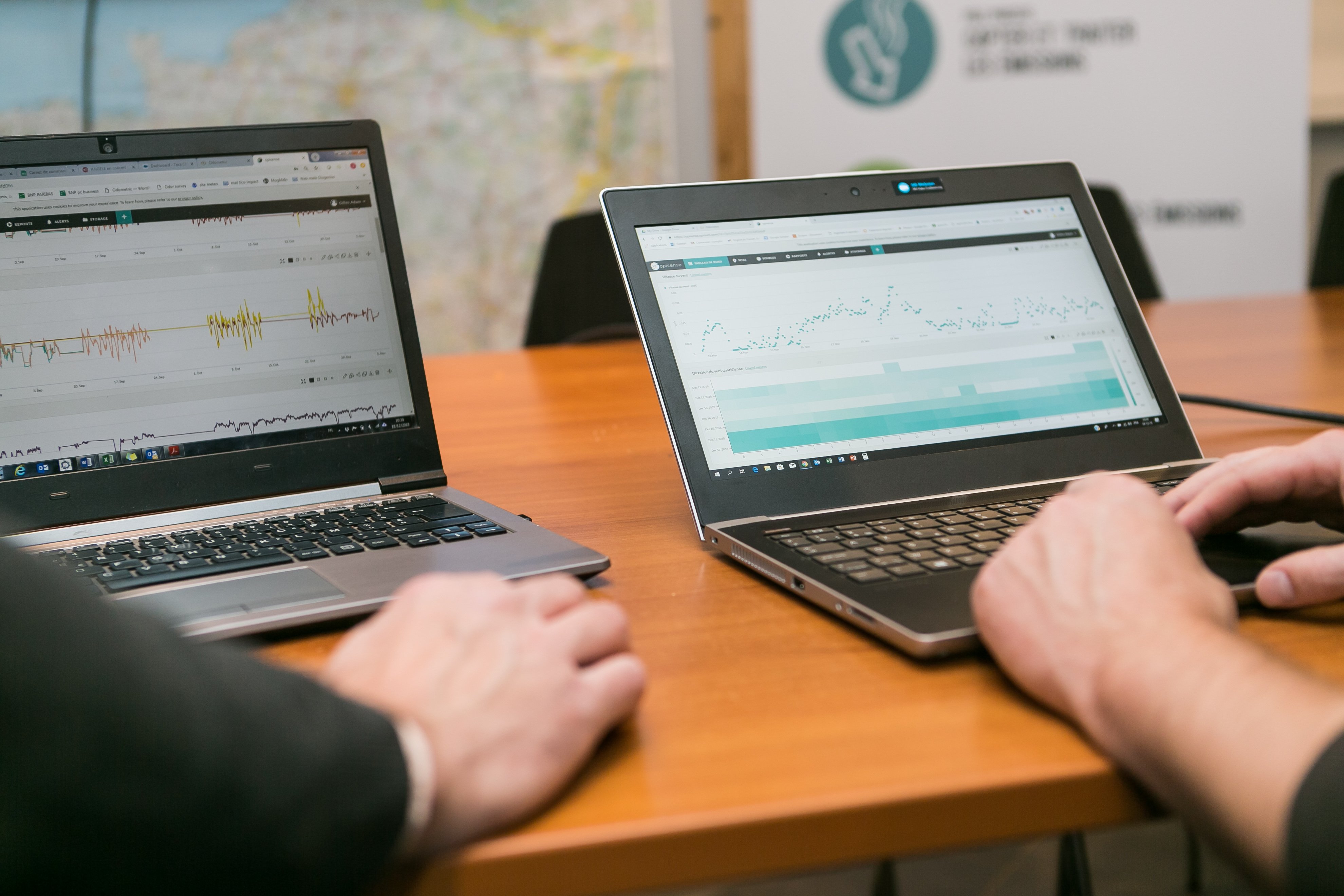
Their customers include industrial sites, waste treatment centres, tanneries, sugar factories, rendering centres, sewage treatment plants, etc.
Identifying and quantifying odours can be a complex task depending on the scale or typology of the site, as odours may combine, spread or develop based on many factors that can be both external and environmental. This is an area that continues to grow in importance.
"Air pollution and odour issues can have a real impact on the local area. The pressure of local residents' complaints has taken on a whole new dimension when it comes to social networks," stresses Julien Delva, Odometric's managing director. "In addition to the impact on the company's image, efforts to become more environmentally friendly and to comply with CSR policies are pushing companies to seek more targeted solutions for monitoring and handling their emissions.
The fact that residential districts are becoming more and more dense and their ever greater proximity to industrial areas as well as the increasing processing of organic matter (purification, biomethanation, etc.) also contributes to making our profession increasingly important. Not to mention the legal constraints, which can vary however, depending on the country."
Forward planning and prevention
Up until now, odour detection and comments about it have always worked on an ad hoc basis, often after an incident reported by local residents.
These residents, who have been trained previously in the accurate identification of odours, play a major role in providing the Odometric teams with the information they need, by regularly inputting data about a monitored site.
But Odometric wanted to go beyond this episodic surveillance, even after an incident.
In early 2019, the company will propose a new solution for monitoring odour and pollutants – in real time – called Manag'Air, which has been designed in close collaboration with Opinum.
Manag'Air relies on the respective skills of both companies, where Odometric designs and deploys "electronic nose" (sensor) networks and Opinum are in charge of the collection, processing and analysis of data. The architecture and the client interface have been developed by App & Web.
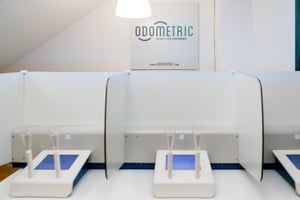 "The deployment of sensor networks will enable more accurate, continuous monitoring of potential sources of odours and processes – whether industrial or otherwise – by detecting triggers or major elements as far upstream as possible," explains Julien Delva. "If a valve opens as a result of a particular temperature level in the production process, it may, for example cause an odour downstream. Similarly, water quality is a determining factor in creating odours that smell like candy... Constant real-time monitoring thus prevents a problem three days later."
"The deployment of sensor networks will enable more accurate, continuous monitoring of potential sources of odours and processes – whether industrial or otherwise – by detecting triggers or major elements as far upstream as possible," explains Julien Delva. "If a valve opens as a result of a particular temperature level in the production process, it may, for example cause an odour downstream. Similarly, water quality is a determining factor in creating odours that smell like candy... Constant real-time monitoring thus prevents a problem three days later."
Another advantage of collecting and analysing the various indicators in real time is being able to precisely document production behaviours and odour patterns that are rarely constant and that tend to change all the time due to a variety of factors.
Since each "electronic nose" is also geolocated, it is now possible to precision monitor even extensive sites, survey the data collection and, by analysis, cross-reference and correlate purely technical data, meteorological data (temperature, humidity, atmospheric pressure, wind force and direction, etc.) and olfactory incidents. "It is thus possible to determine which point in the production chain or site location is the trigger factor, either on its own or in combination with others."
Julien Delva (Odometric): "It is even an essential piece of data when our nose panels tell us there is no odour. By combining this information with the data collected in the Opinum Data Hub database, we can help the manufacturer or the site operator to reproduce these optimal conditions as much as possible."
The Manag'Air solution will be configured according to the specifics of each monitored site.
On one side, Opinum Data Hub will process and analyse a very substantial quantity of data with great regularity. On the other, Odometric will install an average of fifteen sensors per site, each recording up to ten values per minute. Some sensors, for example the ones monitoring valve operation, are queried even more frequently. All of this data is injected into the Opinum Data Hub database where it is analysed and interpreted by special algorithms designed by Odometric. Drift calculations also means each new injection of data must be compared with previous values' history.
For both Odometric and Opinum, the Manag'Air solution is a means of meeting the ever-increasing expectations of both the public and traditional Odometric customers.
Complementarity
There are clear benefits to networks of "electronic noses". They ensure that there is 24-hour surveillance, can be installed right in the middle of industrial sites (fireplaces, networks, tanks, etc.), in places that are difficult to access or even dangerous.
However, human noses will continue to play a role in the Manag'Air solution, both for reporting an incident and odour emissions, mainly because the perception and interpretation of odours will always remain vital information.
The data that is collected and processed by Opinum Data Hub will therefore be cross-checked with the data that "nose panels" will continue to input in the database.


